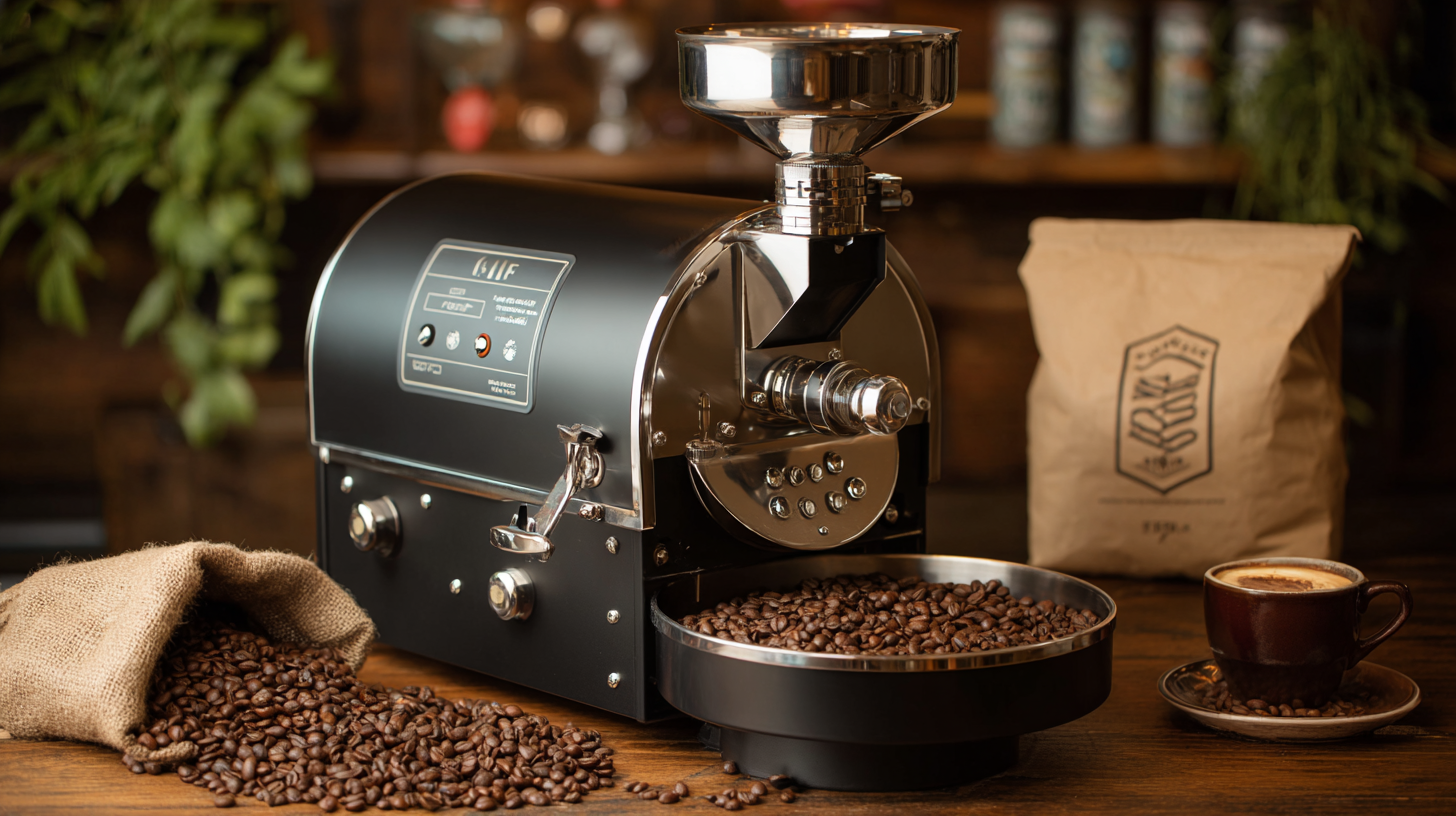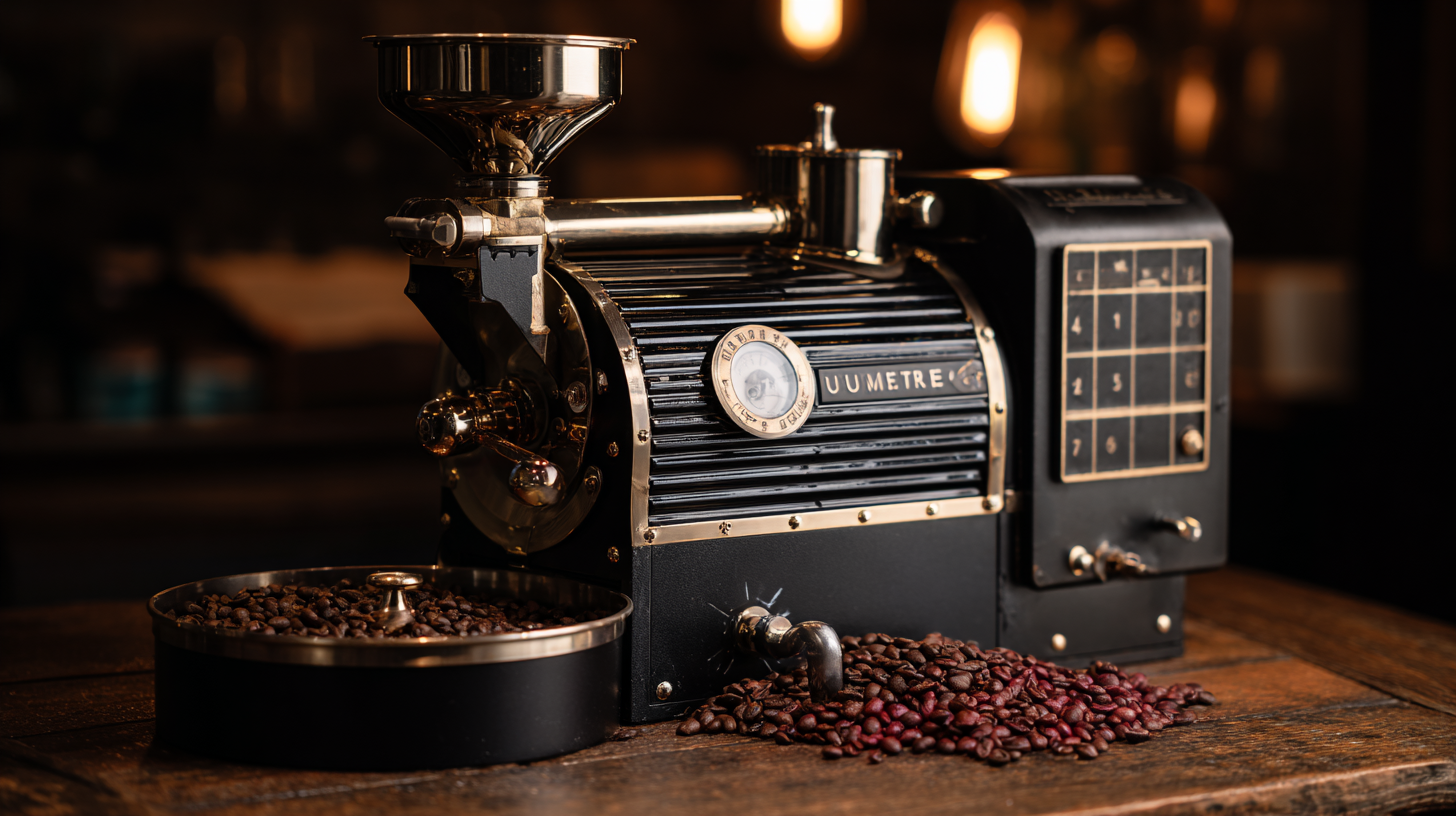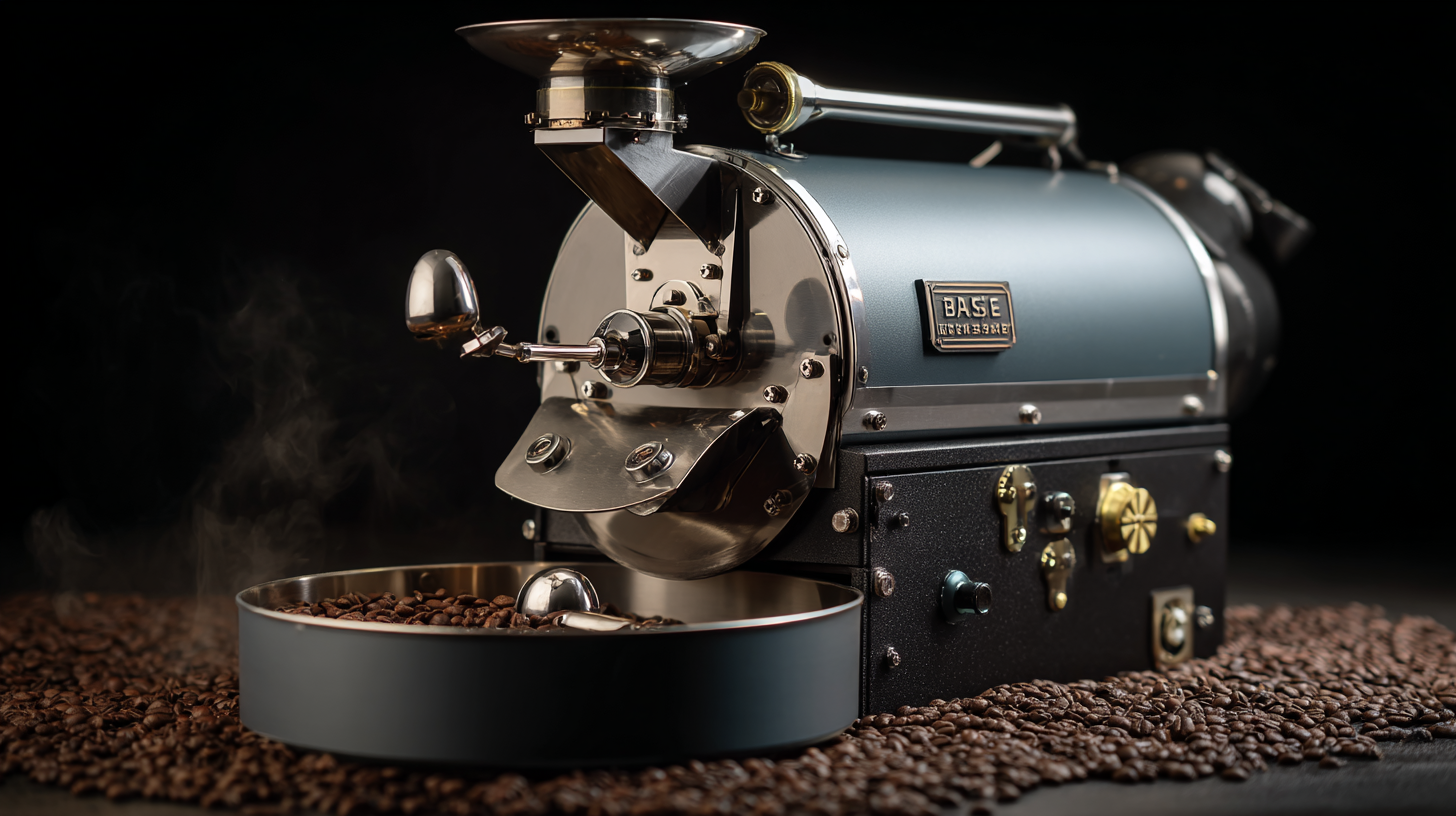Ultimate Guide to the Best Home Coffee Roaster with 5 Essential Features for Perfect Brews
As coffee culture continues to thrive globally, the demand for premium home coffee roasters has surged. According to a recent report by Statista, the global coffee roaster market is projected to reach USD 2.63 billion by 2025, reflecting a growing appreciation for freshly roasted beans at home. Specifically, home coffee roasters have gained traction among enthusiasts looking to craft their perfect brew, offering control over roast profiles that commercial options simply cannot match. This surge in interest not only highlights the importance of selecting the right equipment but also showcases the leading role that manufacturers, particularly those from China, have taken in meeting this rising demand. With advanced technology and innovative designs, these home coffee roasters embody excellence in manufacturing, making them essential for any dedicated coffee aficionado.

Choosing the Right Home Coffee Roaster: Key Considerations
When selecting the right home coffee roaster, it’s crucial to consider several key factors to ensure you achieve your desired coffee experience. First, take a look at the capacity that suits your needs. If you're brewing for yourself or a small household, a compact roaster may suffice, whereas larger units are ideal for families or frequent entertaining. Additionally, think about the roasting control features. A quality roaster will offer adjustable settings for time and temperature, allowing you to experiment until you find your perfect roast profile.
Another essential consideration is the roaster's build quality and design. A solid, durable construction not only enhances longevity but also makes for a more enjoyable roasting experience. Furthermore, noise levels can vary significantly between models, so it's wise to choose a roaster that operates quietly or consider where you'll place it during use. Lastly, read reviews or seek recommendations about ease of cleaning—the easier it is to maintain your roaster, the more you'll enjoy the fresh coffee it produces.
Home Coffee Roasters Comparison
Five Essential Features to Look for in a Home Coffee Roaster
When selecting the best home coffee roaster, it's crucial to consider five essential features that can significantly enhance your brewing experience.
Firstly, the roasting capacity is vital; a machine that can handle at least half a pound of beans allows for preparing larger batches without frequent interruptions. Next, look for temperature control. Roasters with precise temperature settings enable you to experiment with different roast levels, from light to dark, which can impact flavor profiles substantially.
Additional features to consider include monitoring capabilities such as built-in timers and temperature gauges that provide real-time feedback throughout the roasting process. Moreover, a sturdy build with high-quality materials ensures longevity, a significant advantage given that coffee enthusiasts often roast beans frequently.
Lastly, an easy cleanup mechanism can save time and keep your kitchen tidy, enhancing your overall experience. These features collectively contribute to a seamless home roasting journey, letting you enjoy cafe-quality brews from the comfort of your own kitchen.
Comparing Popular Home Coffee Roasters: Pros and Cons
When it comes to choosing the best home coffee roaster, comparing popular models can reveal critical insights into their pros and cons. For example, many home roasters vary significantly in their heating methods. Air roasters typically offer even heat distribution and are favored for their ability to produce a clean flavor profile, while drum roasters excel in developing rich, complex flavors due to longer roast times. According to a 2023 industry report, users of air roasters reported a 30% increase in satisfaction with flavor compared to traditional home roasters.
The features that stand out in the best home coffee roasters include temperature control, batch size, ease of use, design, and maintenance. A survey by Home Coffee Roasters Association highlighted that 65% of users prioritize precise temperature controls, which allow for tailored roasting profiles. Furthermore, models that feature integrated chaff collectors simplify the cleaning process, making them more attractive to casual coffee enthusiasts. Recognizing the balance between advanced functionality and user-friendliness can help consumers make informed decisions that enhance their at-home brewing experience.
Ultimate Guide to the Best Home Coffee Roaster with 5 Essential Features for Perfect Brews
| Feature | Description | Pros | Cons |
|---|---|---|---|
| Temperature Control | Ability to adjust roasting temperature for different beans. | Enhances flavor profiles; allows for customization. | Can be complex for beginners; may require experience. |
| Roast Levels | Options for light, medium, and dark roasting. | Variety in flavors; caters to personal preference. | Inconsistent results without proper skill. |
| Batch Size | Capacity to roast various amounts of coffee at once. | Suitable for different consumption levels; no waste. | Larger machines can take up space; more costly. |
| Cooling System | Method to quickly cool beans post-roast. | Prevents over-roasting; preserves flavor. | May add to machine cost; some systems are noisy. |
| Ease of Use | User-friendly interfaces and controls. | Great for beginners; straightforward operation. | Limited advanced features; may not satisfy experts. |
Tips for Perfecting Your Coffee Roasting Techniques at Home
When it comes to perfecting your coffee roasting techniques at home, understanding the fundamentals is crucial. According to a report by the Specialty Coffee Association, nearly 60% of the coffee consumed globally is roasted at home, highlighting the growing trend and the importance of refining this skill. Home roasting allows for greater control over flavor profiles and freshness, setting the stage for a truly personalized coffee experience.
One essential tip for mastering your roasting technique is to monitor the temperature closely. Experts suggest maintaining a roasting temperature between 400°F to 450°F for optimal results. Adjusting the heat in response to bean development is vital; a quick transition from light to dark roasts can significantly enhance or diminish flavor nuances. Additionally, consider investing in a quality home coffee roaster equipped with clear temperature control and roasting profiles, as these features are pivotal in achieving a consistent roast.
Another valuable tip involves paying attention to the time spent in each roasting stage. Each stage has its own flavor characteristics, and timing can vary based on the type of bean. A report from the Coffee Research Institute indicates that consistency in roasting time can reduce variability in flavor and aroma, ensuring a delicious cup every time. Don't hesitate to experiment with different beans and roasting times to discover your unique coffee preferences, making adjustments based on taste and feedback.

Maintenance and Care for Your Home Coffee Roaster: Best Practices
When it comes to maintaining your home coffee roaster, regular care is essential for both longevity and optimal performance. Start by cleaning the roaster thoroughly after each use. Residual coffee oils and chaff can accumulate and affect both the flavor and the efficiency of your machine. Use a soft, dry cloth to wipe down external areas and a vacuum attachment for the chaff compartment to keep it free from debris.
Additionally, it’s important to monitor the performance of your roaster. Pay attention to the roasting times and the evenness of the roast. If you notice any inconsistencies, check the machine for blockages and ensure that the heating elements are functioning properly. Regularly updating your equipment can also improve your brewing experience—consider replacing any worn-out parts to maintain the best quality roast.
Tips to enhance your maintenance routine include setting a monthly schedule for deeper cleaning and inspection. This could involve checking the electrical components or calibration settings, ensuring your roasts consistently meet your desired profiles. Establishing a good partnership with your roaster also means keeping it dry and stored in a controlled environment, as humidity can play a significant role in the quality of your beans and, ultimately, your brew.



